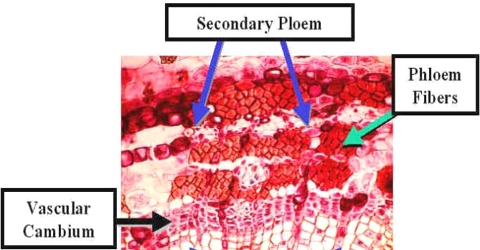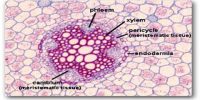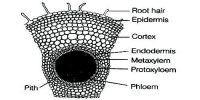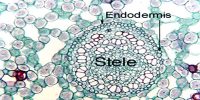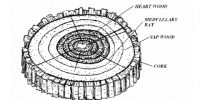Formation of secondary phloem
The phloem transports food for the plant made by the leaves, also known as glucose, in the form of sucrose. The phloem is a living structure made by a single row of long and thin-walled cells. Secondary phloem can remain active over several growth cycles. The cells formed toward the inside are called secondary xylem, or wood, and those formed toward the outside of the cambium are called secondary phloem. The bark and the wood together constitute the secondary plant body of the tree.
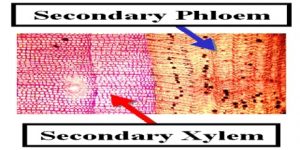
Example: Secondary phloem tissue: Seive tubes, companion cells, phloem fibre and phloem parenchyma.
Secondary phloem is a complex tissue. It always has sieve elements which are analogous to tracheary elements. However, parenchyma is also present, and sclerenchyma may also be visible. There are two kinds of sieve elements, Sieve Cells and Sieve Tube Members.
Function: Secondary phloem tissue conducts food materials to growth regions of the plant.
